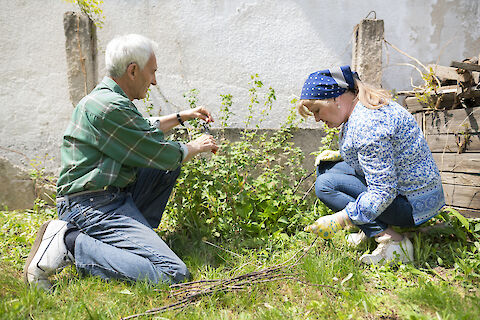
As winter approaches, now is the perfect time to prepare your garden for the colder months ahead. Winterizing your garden ensures your plants' survival and contributes to a blossoming, healthy garden come spring. While gardening can be physically demanding, especially for seniors and those with limited mobility, this guide offers practical steps to get your garden winter-ready. We'll walk you through identifying cold-resistant plants, removing dead plants, mulching, protecting plants from frost, and maintaining indoor plants during the chilly months. Let's get started on setting up your garden for the winter season.
Understanding your Garden
Before you start preparing your garden for winter, it's necessary to understand its specific needs. Every garden is unique, with varying types of plants, soil conditions, and climate. It's beneficial to familiarize yourself with cold-resistant plants. These plants can withstand frost and colder temperatures, ensuring they flourish when spring returns. If you aren't sure which plants are cold-resistant, talk to a local gardening center for more advice. They can show you great plants that can handle colder temperatures and bring gorgeous spring color.
Step-by-Step Guide to Winterize Your Garden
Removing Dead Plants
The first step in winterizing your garden is the removal of dead plants. These can harbor diseases, pests, and fungi, which could affect healthy plants. Gently cut back and remove any plants that have finished their growing season and compost them if they're disease-free. Tools like long-handled pruners can make this task easier and safer if you have limited mobility.
Mulching
Next, applying a layer of mulch helps insulate the soil, protecting plant roots from frost and preventing the growth of weeds. Spread an organic mulch such as straw, wood chips, or compost about two to three inches thick around your plants. Keep it a few inches away from plant stems to prevent rot and disease.
Protecting Plants from Frost
Additionally, protect your vulnerable plants from frost. You can do this by using fleece or hessian wraps around the plants, which helps to trap heat and keep the plants warm. This is especially important for perennials and young plants that may be more susceptible to frost damage.
Winter Watering
Even in winter, plants need water. While the watering frequency will be less than in the warmer months, ensure the plants receive enough water. You'll want to give them water before a freeze because it can help them sustain the frost.
Maintaining Indoor Plants During Winter
Taking care of indoor plants in winter can differ significantly from outdoor plants. They are often less resistant to the cold and may require additional light and humidity. Consider moving your indoor plants closer to windows during the day for more sunlight and mist them occasionally to add humidity.
Need Help With Winterizing Tasks?
Preparing your garden for winter might seem daunting, but with these easy steps, you can ensure that your plants survive winter and flourish in the spring. From understanding which plants are cold-resistant to learning how to protect your garden from frost and maintain your indoor plants during the cold months, winterizing your garden is achievable, even for seniors with limited mobility or strength.
If you need further assistance or support in Austin, Cedar Park, or Lakeway, contact us. We are committed to making life easier and more enjoyable for seniors, including activities like gardening. Let's help you keep your garden healthy this winter!